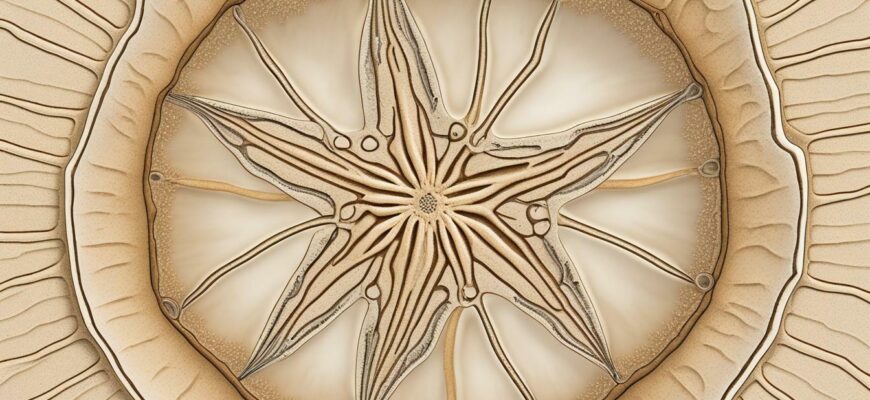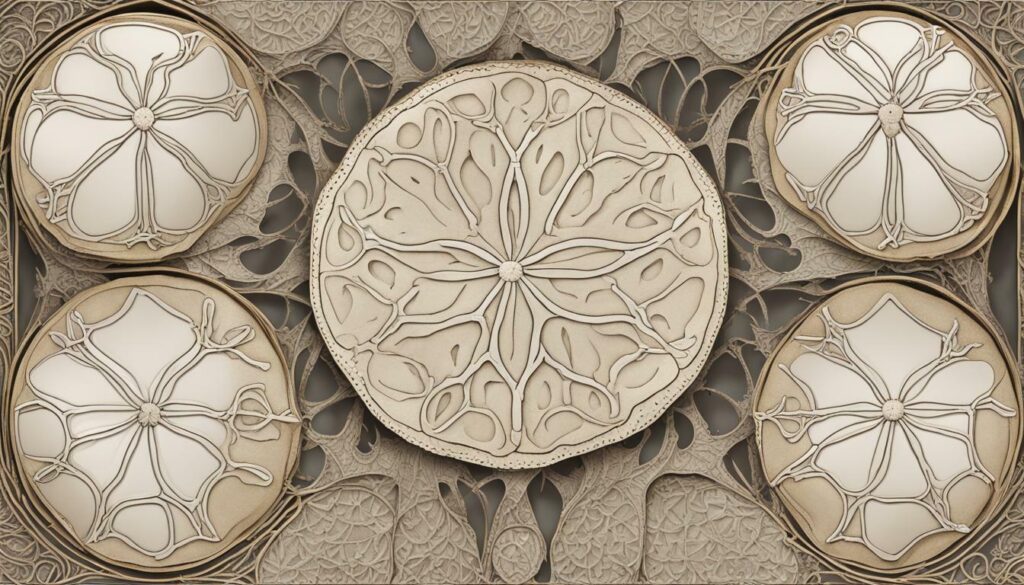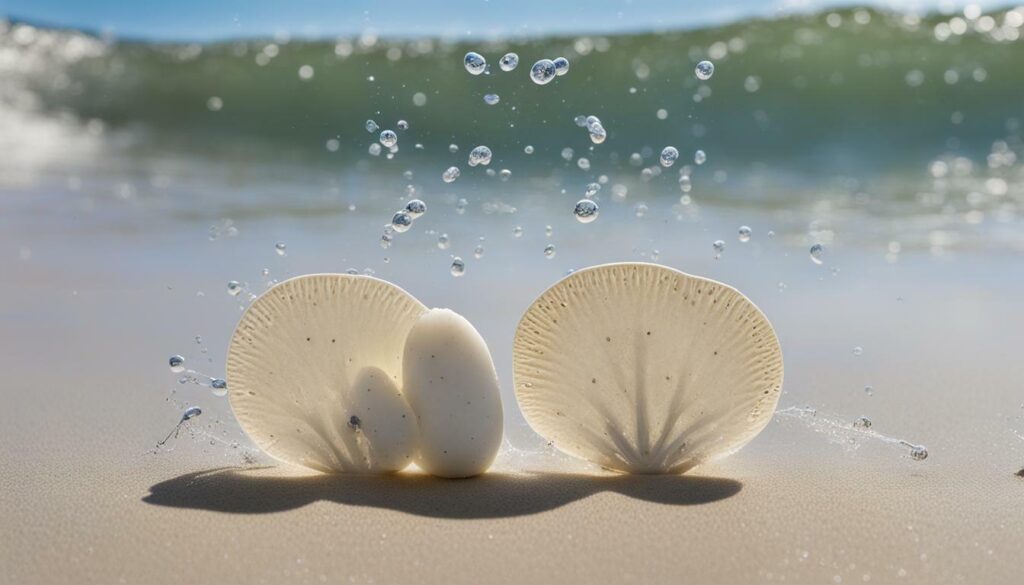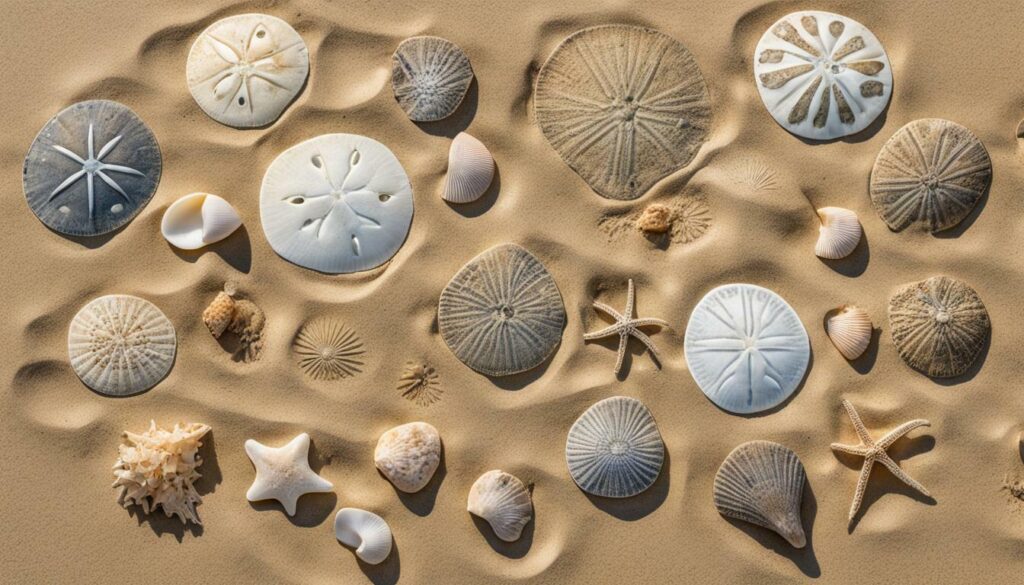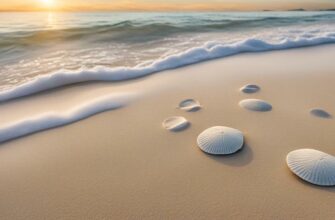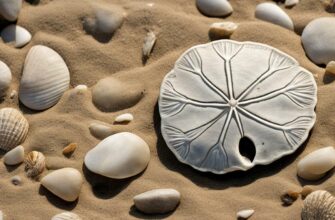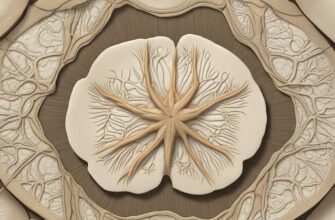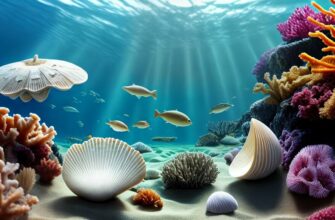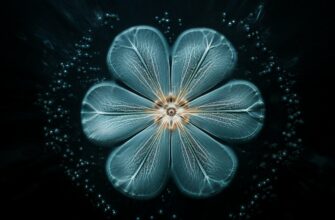Have you ever come across a sand dollar on the beach and wondered if it’s alive or not? The answer might surprise you. While they may appear to be just a pretty shell, sand dollars are actually living creatures that belong to the same family as sea urchins and starfish.
These unique marine animals have a fascinating anatomy and are equipped with a range of adaptations that allow them to thrive in their environment. Let’s take a closer look at the facts and mysteries surrounding sand dollars.
- Key Takeaways
- Understanding Sand Dollar Anatomy
- The Sand Dollar Water Vascular System
- The Life of a Sand Dollar
- Reproduction
- Mobility
- Sand Dollar Habitat and Diet
- Did you know?
- Interesting Facts about Sand Dollars
- Conclusion
- FAQ
- Q: Are sand dollars alive?
- Q: What are some facts about sand dollars?
- Q: What is the anatomy of a sand dollar?
- Q: How do sand dollars reproduce?
- Q: Do sand dollars move?
- Q: What is the preferred habitat and diet of sand dollars?
- Q: What are some interesting facts about sand dollars?
Key Takeaways
- Sand dollars are not just pretty shells, but living creatures that belong to the same family as sea urchins and starfish.
- These unique marine animals have a fascinating anatomy and are equipped with a range of adaptations that allow them to thrive in their environment.
Understanding Sand Dollar Anatomy
One of the most fascinating aspects of sand dollars is their unique anatomy. These marine animals are part of the echinoderm family, which also includes sea urchins and starfish.
One of the defining features of sand dollars is their radial symmetry, which means their bodies are arranged in a circular pattern around a central point. Sand dollars typically have five distinct areas, or petaloid ambulacra, that radiate from the center of their body.
Beneath their round, flat exoskeleton, sand dollars have a complex skeletal system made up of tiny calcified plates that are fused together. These plates provide the sand dollar with protection and also serve as a key component of its unique feeding mechanism.
At the top of the sand dollar’s body is a small mouth surrounded by hair-like projections called cilia. The sand dollar feeds by using these cilia to funnel small particles of food into its mouth. The calcified plates on its underside also play a role in feeding, allowing the sand dollar to grind up larger pieces of food.
Another interesting aspect of sand dollar anatomy is how their bodies are adapted for survival. Sand dollars have the ability to self-right themselves if they become overturned, using their spines and tube feet to push themselves back onto their underside. They also have specialized tube feet that allow them to burrow into sand and stay in place, even in strong currents.
The Sand Dollar Water Vascular System
Like other echinoderms, sand dollars rely on a unique water vascular system to regulate their bodies. This system includes a series of canals and tube feet that are filled with seawater. By regulating the amount of water in these canals, sand dollars are able to control their body position and movement.
The tube feet on the underside of the sand dollar’s body also play a critical role in its water vascular system. These feet have suction-like structures called ampullae that allow the sand dollar to move and manipulate objects.
Fun Fact: Sand dollars are named for their flattened, circular shape and the sandy color of their exoskeletons. However, some species of sand dollars are white, purple, or even blue in color.
The Life of a Sand Dollar
Although sand dollars may appear to be simple creatures, their life cycle is quite complex. Let’s explore their behavior, reproductive processes, and mobility.
Reproduction
Sand dollars reproduce sexually, and their mating rituals are fascinating. Every spring, male and female sand dollars release gametes into the ocean. During the “mating dance,” sand dollars align themselves in a circular pattern and release their gametes simultaneously, creating a visible cloud in the water. Fertilization occurs externally, and larvae develop within the eggs until they hatch and drift in the ocean currents as plankton.
Once the larvae have developed, they settle into the sand and begin to change into juvenile sand dollars. Over time, they develop their trademark radial symmetry and hard exoskeleton.
Mobility
While sand dollars may appear to be immobile, they do have some limited ability to move. They possess tiny spines, called “tube feet,” which they use to move across the sand and burrow themselves. However, their movements are slow and limited, and they primarily rely on ocean currents for transportation.
Sand Dollar Habitat and Diet
Sand dollars are commonly found in shallow, sandy waters along the coast. They prefer to live in areas where water current is strong enough to bring them their preferred food source, but not so strong as to wash them away.
These creatures are filter feeders, and their diet consists of tiny particles, such as plankton, algae, and detritus. They use their tube feet to create water flow, which brings in food particles and allows them to capture it with their spines.
Interestingly, sand dollars are also an important part of the food chain. They are preyed upon by various species, such as sea stars, crabs, and some species of fish.
| Preferred Habitat | Preferred Diet | Role in Ecosystem |
|---|---|---|
| Sandy bottoms of shallow waters along the coast | Plankton, algae, and detritus | Important food source for predators in the ecosystem |
Did you know?
Some species of sand dollars have been known to bury themselves in the sand during periods of low tide to conserve moisture. They use their spines to dig into the sand and create a small pocket to rest in until the tide returns.
Interesting Facts about Sand Dollars
If you thought you knew everything about sand dollars, think again! These marine creatures have plenty of surprising attributes and behaviors that make them even more fascinating. Here are some interesting sand dollar facts:
- Did you know that sand dollars have five sets of tiny “feet” that they use for movement? These feet are covered in tiny hairs that help them grip the sand to crawl along the ocean floor.
- Sand dollars are known for their distinctive white or grayish color, but did you know they can also be green, purple, or even pink?
- The intricate patterns you see on a sand dollar’s body are not just for show – they are actually important for respiration. Sand dollars breathe through a series of small holes on their body, and the patterns help to distribute oxygen throughout their internal organs.
- Have you ever seen a sand dollar “test”? This is the name for their hard, skeleton-like exterior that washes ashore on beaches. It’s a common beachcombing find, but be careful not to take any live sand dollars from the water.
- If you happen to find a living sand dollar, you may notice they have a peculiar odor. This scent is actually a defense mechanism – if a predator attacks, the sand dollar releases a foul smell to ward off the threat.
- According to Native American folklore, sand dollars are a symbol of good luck and fortune. Some believe they represent coins or even the presence of mermaids.
With their unique anatomy, behaviors, and cultural significance, sand dollars truly are an incredible species worth learning about.
Conclusion
So, are sand dollars alive? The answer is yes, but they are not typically considered as we would think of other animals. Sand dollars occupy a unique space in the ecosystem and are fascinating creatures to study and observe.
Throughout this article, we’ve explored the anatomy of sand dollars and their ability to survive in their natural habitat. We’ve also looked at their life cycle, diet, behavior, and shared some interesting facts about these creatures.
It’s important to remember that sand dollars play an important role in their ecosystem, and we should continue to learn and appreciate their fascinating existence. So next time you come across a sand dollar on the beach, take a moment to observe and appreciate this beautiful and unique marine life!
FAQ
Q: Are sand dollars alive?
A: Yes, sand dollars are living organisms.
Q: What are some facts about sand dollars?
A: Sand dollars are flat sea urchins that belong to the echinoderm family. They have a round, disk-like shape and are covered in tiny spines. Sand dollars also have a unique five-fold radial symmetry.
Q: What is the anatomy of a sand dollar?
A: The anatomy of a sand dollar includes a hard skeleton called a test, which is made up of interconnected plates. They have a central mouth on the underside of their body and tube feet that help them move and capture food particles.
Q: How do sand dollars reproduce?
A: Sand dollars reproduce by releasing eggs and sperm into the water, where fertilization occurs. The larvae that hatch from the eggs float in the water until they develop into juvenile sand dollars.
Q: Do sand dollars move?
A: While adult sand dollars are not known for their ability to move quickly, they do have limited mobility. They can use their tube feet to inch along the sandy bottom of their habitat.
Q: What is the preferred habitat and diet of sand dollars?
A: Sand dollars typically inhabit sandy bottoms in shallow waters. They feed on small organic particles, algae, and detritus that they capture with their tube feet and move towards their mouth.
Q: What are some interesting facts about sand dollars?
A: Sand dollars can regenerate lost body parts, and their shells can vary in color from white to purple. In some cultures, sand dollars are considered symbols of good luck or spiritual significance.
Note: This is just a sample FAQ section based on the given structure. The actual content and questions can vary based on the specific information provided in each section.

